
Blood Research
Scope & Guideline
Advancing Hematological Science for a Healthier Tomorrow
Introduction
Aims and Scopes
- Hematologic Malignancies and Disorders:
This area includes research on various types of blood cancers such as leukemia, lymphoma, and myeloma, focusing on their pathophysiology, diagnosis, and therapeutic strategies. - Coagulation and Hemostasis:
Studies in this domain explore disorders of coagulation, including hemophilia, thrombotic disorders, and the underlying mechanisms of hemostasis, as well as innovative treatment approaches. - Transfusion Medicine:
Research related to blood transfusion practices, including safety, efficacy, and management of transfusion-related complications, is a significant focus. - Genomics and Molecular Biology:
The journal covers advancements in genomic technologies and molecular biology that enhance understanding of blood disorders and inform treatment strategies. - Clinical Trials and Real-World Evidence:
The publication emphasizes the importance of clinical trials and observational studies that provide real-world evidence on treatment outcomes in hematology. - Patient Management and Supportive Care:
Research on multidisciplinary approaches to managing patients with hematologic conditions, including supportive care measures, is highlighted.
Trending and Emerging
- Novel Therapeutics and Targeted Therapies:
There is a growing emphasis on research related to novel agents and targeted therapies, particularly in hematologic malignancies, reflecting advancements in personalized medicine. - Immunotherapy and CAR T-Cell Therapy:
Publications increasingly focus on immunotherapy approaches, including CAR T-cell therapy, showcasing innovative treatment strategies for resistant hematologic cancers. - Microbiome and Its Impact on Hematologic Disorders:
Emerging research is exploring the role of the microbiome in hematologic disorders, indicating a shift towards understanding the interplay between gut health and blood disorders. - Real-World Evidence and Patient-Centered Outcomes:
There is a trend towards emphasizing real-world evidence studies that assess treatment outcomes from a patient-centered perspective, including quality of life measures. - Genomic Profiling and Precision Medicine:
The integration of genomic profiling in clinical practice is gaining traction, with studies focusing on how genetic variations influence treatment responses and disease progression.
Declining or Waning
- Traditional Chemotherapy Approaches:
There is a noticeable reduction in studies focusing solely on traditional chemotherapy regimens, as newer targeted therapies and immunotherapies gain prominence. - General Reviews on Hematology:
The frequency of broad, non-specific reviews on hematology topics has decreased, indicating a shift towards more specialized and focused research. - Epidemiological Studies without Specific Focus:
General epidemiological studies that do not contribute directly to therapeutic advancements or clinical practices are appearing less frequently.
Similar Journals

Journal of Blood Medicine
Unlocking Potential: Transforming Knowledge into Practice in Blood MedicineThe Journal of Blood Medicine, published by DOVE MEDICAL PRESS LTD, stands as a vital resource in the field of hematology, focusing on the latest research developments and clinical advancements in blood medicine. With an impact factor reflective of its growing relevance, this open-access journal has been delivering quality scholarly work since 2010, ensuring that critical research is readily available to the global scientific community. The journal operates under an open-access model, further enhancing its dissemination and accessibility to researchers, professionals, and students alike. In the 2023 rankings, it secured a Q3 category status within hematology and achieved a commendable 76th rank out of 137 in Scopus listings, indicating its commitment to quality and innovation in this specialized area. Located in New Zealand, the journal's diverse topics encompass clinical research, treatment modalities, and emerging therapies, contributing significant insights vital for shaping future advancements in blood medicine.
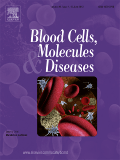
BLOOD CELLS MOLECULES AND DISEASES
Shaping the Future of Blood Cell and Disease StudiesBLOOD CELLS MOLECULES AND DISEASES is a prominent multidisciplinary journal published by Academic Press Inc., Elsevier Science, specializing in the fields of hematology, molecular biology, and cell biology. With an ISSN of 1079-9796 and an E-ISSN of 1096-0961, this journal serves as a vital resource for researchers, professionals, and students exploring the complex interplay between blood cells and their corresponding molecular pathways in disease states. Spanning topics from cellular mechanisms to therapeutic advancements, BLOOD CELLS MOLECULES AND DISEASES holds a commendable reputation with a 2023 category quartile ranking of Q2 in Hematology and Q3 in several related fields. This journal not only provides a platform for the dissemination of innovative research but also fosters collaboration and knowledge exchange within the scientific community. As it converges from 1995 to 2025, the journal continues to impact the medical and biological sciences significantly, making it an essential tool for advancing our understanding of hematologic diseases.
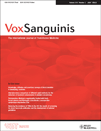
VOX SANGUINIS
Shaping the Future of Hematological ScienceVOX SANGUINIS is a distinguished peer-reviewed journal in the fields of Hematology and Medicine, published by Wiley, a leading academic publisher based in the United Kingdom. With a rich history dating back to its inception in 1952, this journal has consistently provided a platform for innovative research and insightful reviews, advancing the understanding of blood-related disorders and therapies. As evidenced by its robust performance—ranking #57 out of 137 in Scopus for Medicine in Hematology and holding a Q2 classification in both Hematology and miscellaneous Medicine categories—VOX SANGUINIS is recognized for its significant contributions to the scientific community. This journal serves as a vital resource for researchers, professionals, and students alike, fostering knowledge exchange and collaboration within the field. With its ongoing commitment to quality and integrity, VOX SANGUINIS continues to shape the future of hematological research well into 2024 and beyond.
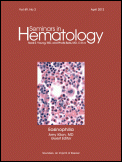
SEMINARS IN HEMATOLOGY
Elevating Clinical Practices with Cutting-Edge Knowledge.SEMINARS IN HEMATOLOGY, published by W B SAUNDERS CO-ELSEVIER INC, stands as a premier academic journal dedicated to the field of hematology. Established in 1964, this journal has built a robust reputation over its nearly six-decade history, now recognized as a Q1 journal in Hematology with an impressive impact factor reflective of its high relevance and citation frequency within the academic community. Residents and scholars can access meticulously curated articles that address innovative research, clinical practices, and advancements in the understanding of blood disorders and treatment methodologies. The journal, ranked #36 out of 137 in the Scopus Medicine Hematology category, showcases cutting-edge research, ensuring its contributions are crucial for professionals, researchers, and students striving to stay at the forefront of the hematology field. Although not an Open Access journal, SEMINARS IN HEMATOLOGY continues to unite a global audience dedicated to advancing the science and clinical practices in hematology.
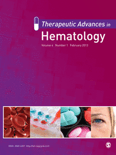
Therapeutic Advances in Hematology
Elevating therapeutic practices in hematology.Therapeutic Advances in Hematology is a prestigious, peer-reviewed journal dedicated to advancing the field of hematology through innovative research and clinical studies. Published by SAGE Publications Ltd, this journal has become a vital resource for hematology professionals and researchers since its inception in 2010. With its impactful Q1 ranking in Hematology and a Scopus rank of 62 out of 137, it firmly establishes itself as a leader in disseminating significant findings and therapeutic approaches. The journal has been committed to open access since 2019, ensuring that its cutting-edge research is readily available to the global scientific community. Covering a broad scope of topics within hematology, Therapeutic Advances in Hematology is an essential platform for those seeking to enhance their understanding and implementation of therapeutic practices in hematological conditions. The journal embraces submissions from both clinical and laboratory perspectives, fostering collaboration and dialogue among researchers, clinicians, and students alike.
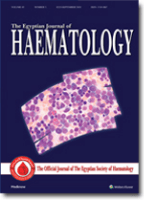
Egyptian Journal of Haematology
Exploring Breakthroughs in Blood Health and DiseaseThe Egyptian Journal of Haematology, published by WOLTERS KLUWER MEDKNOW PUBLICATIONS, stands as a pivotal resource in the field of hematology, particularly within the context of Egypt and the broader Middle Eastern region. This journal is dedicated to disseminating high-quality research that explores the latest advancements in blood disorders, hematologic malignancies, and transfusion medicine. With a focus on original research, case studies, and reviews, it aims to provide a comprehensive platform for hematologists, researchers, and healthcare professionals to enhance their understanding and management of hematological conditions. Although it is not an open-access journal, the rigorous peer-review process ensures that only the most impactful studies are published, contributing to the journal's reputation in the academic community. The Egyptian Journal of Haematology serves as an essential tool for advancing knowledge, improving clinical outcomes, and fostering collaboration among experts in the field.
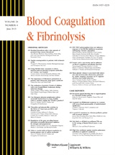
BLOOD COAGULATION & FIBRINOLYSIS
Transforming Understanding of Blood DynamicsBLOOD COAGULATION & FIBRINOLYSIS, a distinguished journal in the field of hematology, is published by Lippincott Williams & Wilkins, a reputable name in academic publishing. Since its inception in 1990, this journal has been committed to advancing the understanding of blood coagulation and fibrinolysis, focusing on the molecular mechanisms, clinical implications, and therapeutic aspects of these critical processes. With an impact factor reflecting its significance within the academic community, currently ranking Q3 in both Hematology and Miscellaneous Medicine for 2023, this journal serves as a pivotal platform for researchers and professionals alike. By providing access to cutting-edge research and reviews, BLOOD COAGULATION & FIBRINOLYSIS endeavors to foster collaboration and innovation in the treatment of coagulation disorders. Interested readers can explore ongoing contributions to the field through subscriptions and institutional access options.

Blood Transfusion
Exploring New Frontiers in Blood Science.Blood Transfusion is a leading journal in the fields of Hematology, Immunology, and Medicine, published by SIMTIPRO SRL in Italy. With its ISSN 1723-2007, the journal has established a significant presence in the academic community, as evidenced by its positioning within the Q2 category in Hematology and Medicine (miscellaneous) and Q3 in Immunology and Allergy for 2023. Notably, it ranks #38 out of 137 in the Hematology category, showcasing its impactful contributions to research and practice. Operating under a traditional publishing model, this journal provides valuable insights into advances in blood transfusion science, ultimately aimed at enhancing patient care and outcomes. Spanning from 2003 to 2024, the scope of Blood Transfusion covers a wide range of topics related to hematological and immunological research, making it an essential resource for researchers, healthcare professionals, and students engaged in these critical fields.
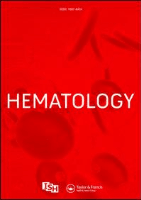
Hematology
Elevating Hematology: A Platform for Cutting-Edge ResearchHematology is a distinguished open-access journal published by Taylor & Francis Ltd, dedicated to advancing research and knowledge in the field of hematology. Established in 1996, the journal has continually evolved to meet the needs of a growing community of researchers and practitioners, providing a vital platform for disseminating innovative findings and clinical insights. With its impact factor reflecting a robust commitment to quality scholarship, Hematology has achieved a respectable position in its category as evidenced by its Q3 ranking in the Hematology category and ranks #85 out of 137 in the Scopus index, which positions it in the 38th percentile among its peers. The journal’s open-access policy, initiated in 2019, further enhances its reach and accessibility, allowing a broad audience of professionals, researchers, and students to engage with high-quality research without barriers. By covering a wide range of topics related to blood disorders, treatment methodologies, and emerging therapies, Hematology stands as an essential resource for those dedicated to innovation in this critical area of healthcare.
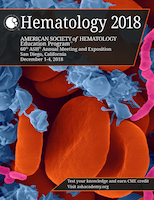
Hematology-American Society of Hematology Education Program
Advancing Hematology through Expert EducationHematology-American Society of Hematology Education Program is a premier peer-reviewed journal dedicated to advancing the field of hematology through comprehensive educational content. Published by the American Society of Hematology, this journal plays a crucial role in disseminating knowledge to researchers, clinicians, and students in hematology and related disciplines. With an impressive Q1 status in the field, it ranks among the top journals at the forefront of hematological research, as evidenced by its 60th percentile ranking in Scopus' Medicine - Hematology category. Although it does not offer open access, the journal provides invaluable insights and educational resources from leading experts, focusing on the latest advancements, treatment protocols, and evolving understanding of blood disorders. Covering a wide range of topics, from basic research to clinical applications, this journal is essential for anyone seeking to deepen their expertise and stay informed on the latest developments in hematology. For further engagement, readers can access insightful articles published since 2001, ensuring a rich repository of knowledge for ongoing research and clinical excellence.